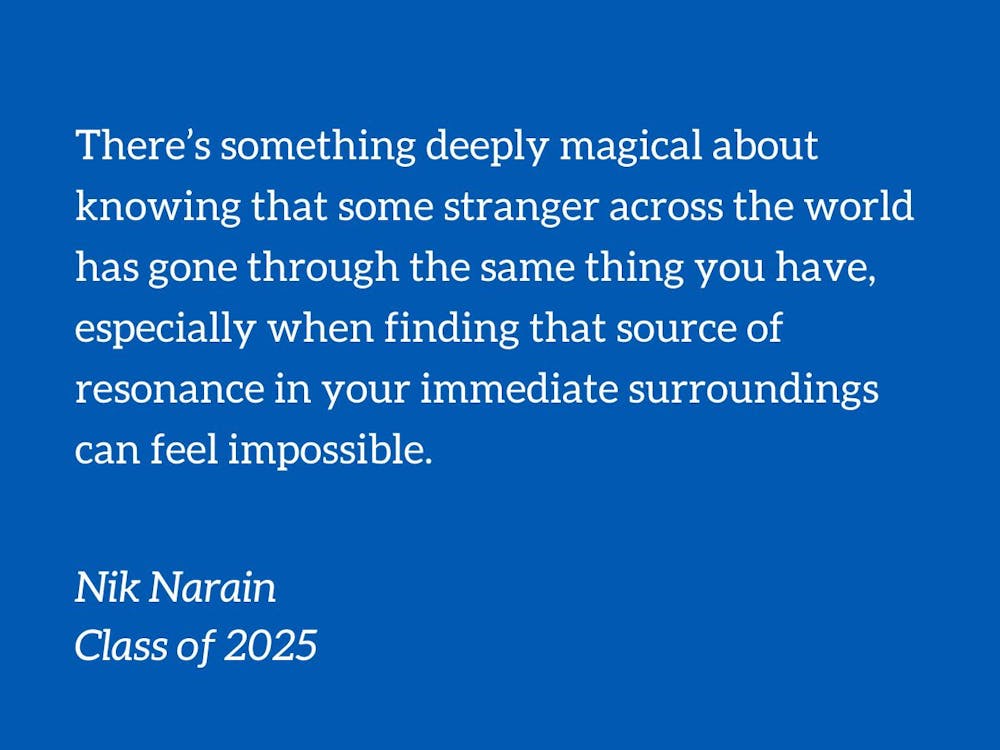I spent a lot of time on trans YouTube this year. Like, a lot. In the dark periods of navigating transition, I found solace in these brief, 10-minute clips about embarrassing coming out stories, cultural approach to gender, hormone replacement therapy — the list goes on. There’s something deeply magical about knowing that some stranger across the world has gone through the same thing you have, especially when finding that source of resonance in your immediate surroundings can feel impossible.
But the more I found myself on trans YouTube, and LGBTQ+ YouTube in general, the more I found myself surrounded by blatant queerphobic rhetoric. As in, the more I tried to look for information about LGBTQ+ topics, the more I found my For You page on YouTube suddenly full of armchair activists weighing in on the “trans debate”; therapists encouraging what is essentially a diluted form of conversion therapy and news anchors “roasting woman with pronouns.” And this, of course, is in addition to the hateful comments section of many videos covering any sort of LGBTQ+ related content, especially on short-form content like YouTube reels, notorious for pushing transphobic and misogynistic rhetoric.
Now believe me, I’m all for seeing both sides to a debate, but also the existence of LGBTQ+ people isn’t a debate. If search algorithms are so well known for contributing to polarization, why is the case different for this topic? After all, polarization is incredibly common for transphobic content, with several online users and LGBTQ+ content creators reporting this phenomenon on various media platforms. As one user tweeted, “I tried out YouTube Shorts recently and I counted 25 transphobic shorts in the span of half an hour of scrolling. Not a single pro-trans one.”
Prominent LGBTQ rights organization GLAAD recently released its fourth annual Social Media Safety Index (SMSI), the leading analysis of anti-LGBTQ online hate and disinformation. In partnership with Ranking Digital Rights (RDR) and Goodwin Simon Strategic Research (GSSR), GLAAD developed a Scorecard to quantitatively evaluate a media platform’s commitment to protecting LGBTQ+ people. This included evaluating the platform’s anti-harassment policies (such as deadnaming, misgendering and online violence), accessibility around integrating pronoun options in user profiles, internal structures to promote LGBTQ+ inclusion within its workplace amongst other things.
Out of the six platforms analyzed (Facebook, Instagram, TikTok, Threads, YouTube, and X), five platforms received an F, which GLAAD representatives called “abysmal” in their report.
TikTok was the only company that received a D+, a slight step-up from its competitors. As prominent vlogger Hank Green tweeted, “TikTok definitely remains better than Shorts at not randomly showing me transphobic/misogynistic content just because I like science stuff and video game clips. It’s like ‘we’ve noticed you like physics, might I interest you in some men’s rights?'”
Important to note, the measures included in this report were only centered on the companies’ inclusion of anti-harassment policies, but not their enforcement, an even larger confounding variable around online homophobia and transphobia. Because even though TikTok, for example, has strict policies around deadnaming and misgendering, we all know that thousands of people are clearly not following it. Unfortunately, enforcement is notoriously difficult to study methodologically, so information around this is currently unavailable.
According to the Anti-Defamation League (ADL), from 2022-23, more than 350 anti-LGBTQ incidents of hate and extremism in the US were counted. This includes acts of harassment, like bomb threats and protests; acts of vandalism, like graffiti and arson; and acts of physical assault. 138 incidents were specifically targeted towards drag events and performers, 33 toward schools and educators, 23 towards healthcare facilities and providers and 22 towards government buildings and elected officials.
These incidents obviously don’t occur in a vacuum and are strongly influenced by anti-LGBTQ radicalization and sensationalization through media. As GLAAD President Kate Ellis writes, “As we have seen over and over again — there is a direct line from dangerous online rhetoric and targeting to violent offline behavior against the LGBTQ community. Sadly, we also see — over and over again — how social media companies refuse to enforce their own rules to protect LGBTQ people and other marginalized groups, despite their assertions that hate speech, bullying, and harassment are not allowed on their platforms.
As profit margins of major media companies continue to rise, coined by the GLAAD report as the “Anti-LGBTQ Hate Industrial Complex,” the deprioritization and often ignorance towards ensuring the safety and wellbeing of its users will only grow more alarming. The SMSI recommends multiple policy solutions for tackling anti-LGBTQ+ harassment, such as including explicit policies towards LGBTQ+ protection on the platform, implementing policies around deadnaming and misgendering that don’t just involve self-reporting, disclosing company progress around meeting its own diversity and equity goals and showing greater commitment towards addressing the wrong demonetization and removal of LGBTQ users and their content. Finally, GLAAD urges media companies to ensure that all users have a freedom of self-expression on the apps and have a clear understanding of how information regarding their sexuality and gender identity will be handled.
Online platforms have long been safe spaces for queer people around the world, especially for those in places where anything outside cis-heteronormativity is stigmatized and/or criminalized. It’s frustrating and often dehumanizing when the places in which you try to seek refuge are perpetually attacked by anyone from self-proclaimed alphas “destroying transgenderism” to scientists who rely on faulty methodologies to promote harmful ideas about one’s very existence. I hope for greater accountability from media giants to prioritize inclusion and reducing online anti-LGBTQ violence. Until then, I’ll dislike as many hate posts as I find and make fun of them to my friends.
Nik Narain is a Trinity senior. His column runs on alternating Saturdays.
Get The Chronicle straight to your inbox
Sign up for our weekly newsletter. Cancel at any time.

